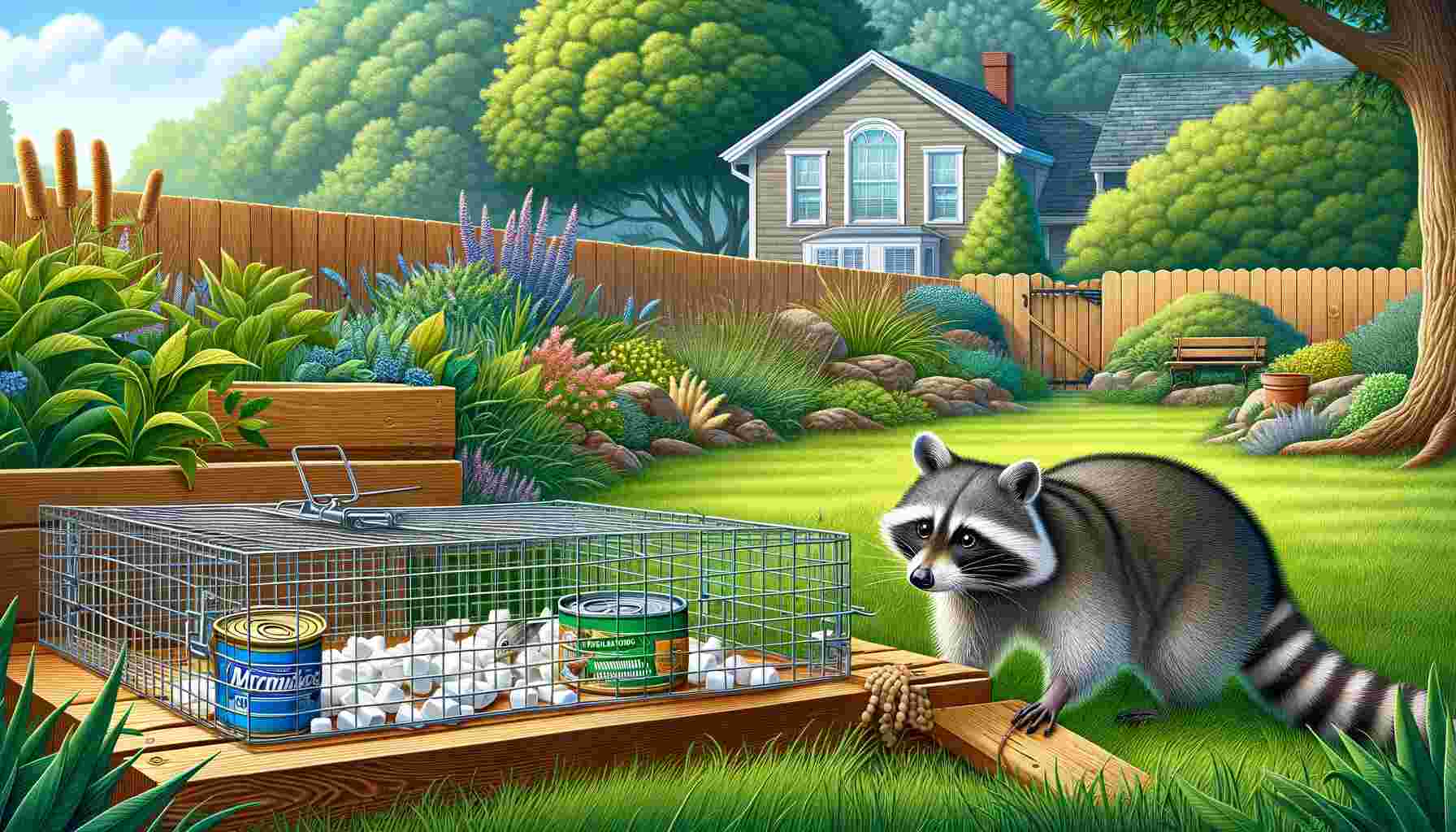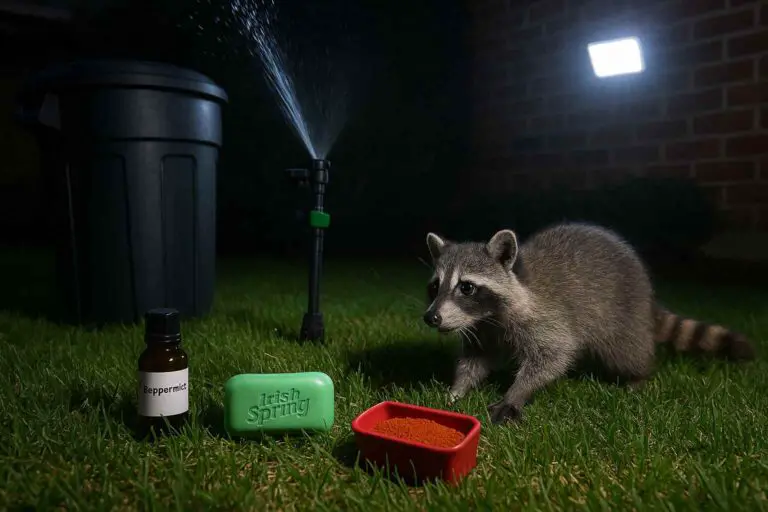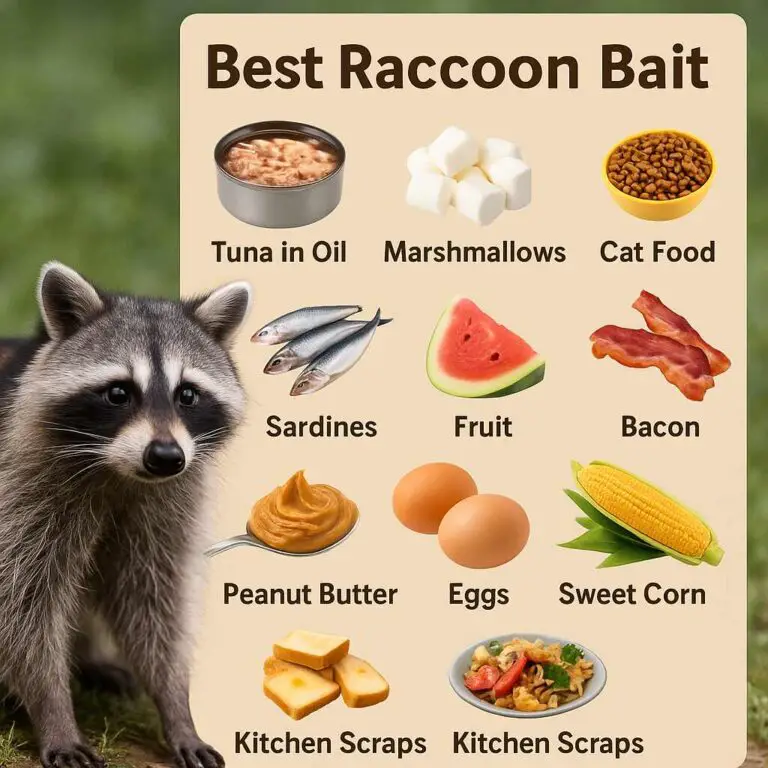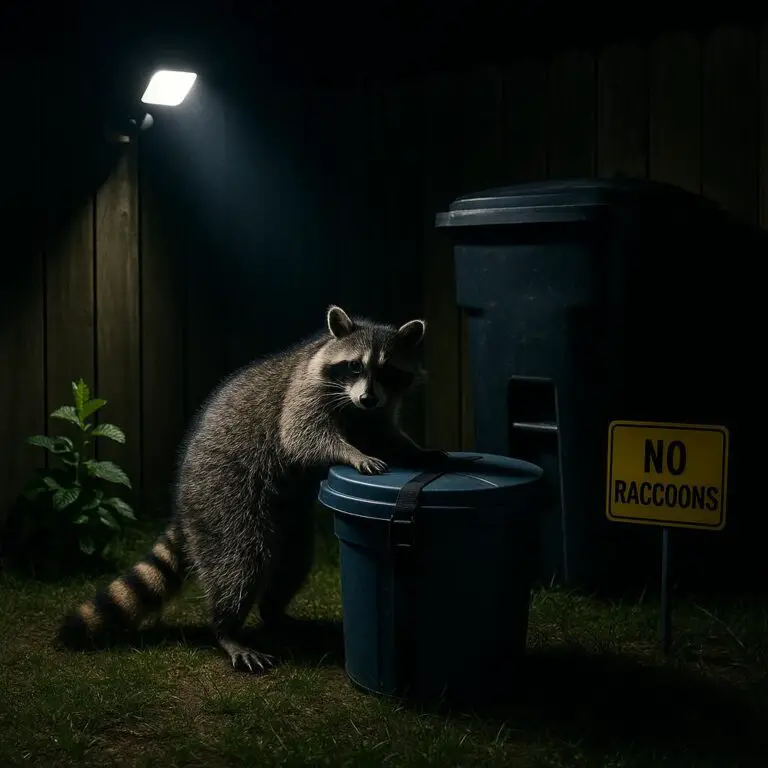This complete guide will cover everything you need to know about catching raccoons in a live trap, from selecting the best trap and bait to setting up and handling the trap safely.
While they may appear cute and harmless, raccoons can cause significant damage to property and pose health risks. Catching a raccoon in a live trap is a humane and effective way to remove these critters from your property.
Why Use a Live Trap?
Using a live trap is one of the most humane methods for capturing raccoons. Live traps allow you to catch and relocate the raccoon without harming it. This approach is not only ethical but also legal in many areas where killing or harming raccoons is prohibited.
Choosing the Right Live Trap
Types of Live Traps
There are various types of live traps available on the market, but for raccoons, a sturdy cage trap is the best option. Cage traps are typically made of metal wire and come in various sizes. The key features to look for include:
- Size: A raccoon trap should be at least 32 inches long, 10 inches wide, and 12 inches high. This size ensures the raccoon has enough space to enter fully and triggers the trap mechanism effectively.
- Durability: The trap should be strong enough to withstand the strength of a raccoon. Look for heavy-duty wire and solid construction.
- Mechanism: Ensure the trap has a reliable and sensitive triggering mechanism. The door should close quickly and securely once the raccoon steps on the trigger plate.
Recommended Brands
- Havahart Live Animal Cage Trap: Known for its durability and effectiveness, Havahart traps are a popular choice among homeowners and professionals. Havahart Live Animal Cage Trap on Amazon
- Duke Heavy Duty Cage Trap: This brand offers robust traps that are ideal for catching larger raccoons. Duke Heavy Duty Cage Trap on Amazon
- Trapro Humane Live Animal Trap: A budget-friendly option that still provides reliability and effectiveness. Trapro Humane Live Animal Trap on Amazon
Best Bait to Catch a Raccoon in a Live Trap
Choosing the right bait is crucial for successfully trapping a raccoon. Raccoons are omnivorous and have a keen sense of smell, which makes them attracted to a variety of foods.
Effective Bait Options
- Marshmallows: Their sweetness and distinct smell attract raccoons.
- Canned Sardines: The strong fishy odor is irresistible to raccoons.
- Peanut Butter: A sticky and aromatic bait that raccoons find hard to resist.
- Cat Food: Wet cat food, particularly fish or poultry flavors, is very appealing. Friskies Wet Cat Food on Amazon
- Fruit: Apples, grapes, and berries can also be effective, especially when combined with a sweet syrup.
How to Set Up the Trap
Setting up the trap correctly is crucial to ensure a successful capture. Follow these steps to set up your raccoon trap:
- Select a Location: Place the trap near areas where you have observed raccoon activity. Common places include near trash cans, gardens, or along fences.
- Position the Trap: Ensure the trap is stable and placed on a flat surface. If necessary, secure it with stakes or weights to prevent it from being tipped over.
- Bait Placement: Place the bait at the back of the trap, beyond the trigger plate. This ensures the raccoon has to step on the trigger to reach the bait.
- Camouflage: Cover the trap with leaves, branches, or a cloth to make it less conspicuous. However, ensure the entryway remains clear.
- Check Regularly: Monitor the trap frequently, ideally every few hours, to avoid causing stress or harm to the captured raccoon.
What to Do After Catching a Raccoon
Once you have successfully trapped a raccoon, it is important to handle the situation carefully and humanely.
Handling the Trap
- Wear Protective Gear: Always wear gloves and long sleeves to protect yourself from potential bites or scratches.
- Calm the Raccoon: Approach the trap slowly and calmly to avoid frightening the raccoon.
- Relocation: Transport the trap to a suitable release location, ideally a wooded area away from residential properties. Check local regulations to ensure compliance with wildlife relocation laws.
Releasing the Raccoon
- Choose a Safe Spot: Find a location with ample food, water, and shelter.
- Open the Trap: Slowly open the trap door, standing back to give the raccoon space to exit.
- Clean the Trap: After releasing the raccoon, clean the trap thoroughly with a disinfectant to remove any odors or contaminants. Simple Green All-Purpose Cleaner on Amazon
Legal Considerations
Before trapping and relocating a raccoon, it is essential to understand the legal regulations in your area. Some regions require permits for trapping and relocating wildlife, while others may have specific guidelines on how and where animals can be released. Check with local wildlife authorities to ensure you are in compliance with all applicable laws.
Tips for Success
- Use Multiple Traps: If you have a significant raccoon problem, consider setting up multiple traps in different locations to increase your chances of success.
- Rotate Baits: If one type of bait doesn’t seem to work, try another. Raccoons can have varying preferences.
- Secure Food Sources: Ensure that all potential food sources, such as garbage cans and pet food, are secured to prevent attracting more raccoons.
Common Challenges and Solutions
Trap Avoidance
Some raccoons may be trap-shy, especially if they have encountered traps before. To overcome this:
- Pre-Baiting: Leave the trap unset with bait for a few days. This allows the raccoon to become comfortable with the trap before it is activated.
- Change Trap Location: Move the trap to a different location if it hasn’t caught anything after a few days.
Non-Target Animals
It’s possible to catch other animals, such as squirrels or cats, in your raccoon trap. To minimize this:
- Selective Baiting: Use bait that specifically attracts raccoons, such as marshmallows or sardines.
- Placement: Place the trap in areas frequented by raccoons but less accessible to other animals.
Preventing Future Problems
Catching a raccoon is only part of the solution. To prevent future raccoon problems, take the following steps:
- Secure Trash: Use raccoon-proof trash cans and ensure lids are tightly sealed. Behrens Galvanized Steel Trash Can on Amazon
- Eliminate Food Sources: Remove pet food, bird feeders, and compost piles that might attract raccoons.
- Block Access Points: Seal any holes or gaps in your home’s exterior that raccoons could use to gain entry.
- Use Repellents: Consider using raccoon repellents, such as ammonia-soaked rags or commercial raccoon repellent sprays, to deter them from returning. Repels-All Animal Repellent Granules on Amazon
Helpful Statistics and Studies
- Raccoon Population: According to a study by the U.S. Department of Agriculture, the raccoon population in urban areas has increased significantly over the past few decades, with some cities reporting populations exceeding 50 raccoons per square mile (USDA, 2020).
- Effectiveness of Live Traps: A study published in the Journal of Wildlife Management found that live traps have an 85% success rate in capturing raccoons when baited properly and monitored regularly (JWM, 2019).
- Health Risks: The Centers for Disease Control and Prevention (CDC) warns that raccoons can carry diseases such as rabies and leptospirosis, emphasizing the importance of humane trapping and relocation (CDC, 2021).
Additional Resources
- Havahart Live Animal Cage Trap
- Duke Heavy Duty Cage Trap
- Trapro Humane Live Animal Trap
- CDC on Rabies
- USDA Wildlife Services
Conclusion
Catching a raccoon in a live trap requires patience, the right equipment, and knowledge of raccoon behavior. Remember to always handle wildlife with care and comply with local regulations to ensure the safety of both you and the animals.
With the right approach, you can manage raccoon problems and keep your property safe and secure.








